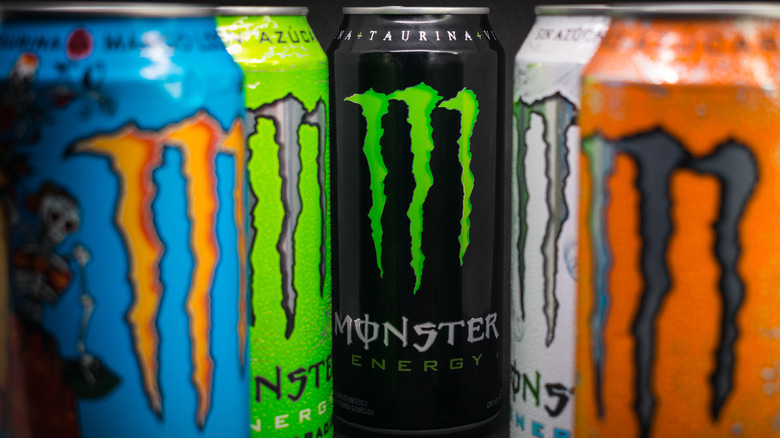How Monster Energy Is Suffering From Its Own Success
It's often said that too much of a good thing can be bad, and energy drink titan Monster is learning that lesson in real-time. Due to inflationary pressures, the company will be forced to raise its prices starting September 1 to combat issues in its supply chain (via Food Dive). To understand how the company arrived at its current position, we must review how they were doing during the pandemic.
According to Beverage Industry, during the pandemic, the energy drink market thrived. With an astounding $14 billion, this sector's sales increased 9.2% in 2020. Specifically, Monster's sales increased 13.2% from the prior year, landing them at number two (behind Red Bull) for top energy drinks. This increase in demand is expected to continue for the market as work and travel begin to reopen and more people rely on Monster for a pick-me-up during their day. While this is great for their bottom line, the increased demand is starting to hurt the company.
It was good, until it wasn't
Despite rising sales in recent years, energy drink company Monster finds itself in a financial dilemma now that its demand is high. How could that be, you ask? Aluminum cans (via Supply Chain Dive). A part of any company's expenses is the cost of materials and how all those materials get transported. In Monster's case, their shipping costs skyrocketed from $46 million in Q1 to $66.7 million in Q2 this year (per Supply Chain Dive). A significant portion of the adjustment comes from the fact that they have to import the aluminum cans used to house their beverage.
During the height of the pandemic, backed-up ports and high freight costs required Monster to decide whether to pay the expenses to meet the growing demand or allow store shelves to be vacant (per Food Business News). Thankfully, for fans, they chose the former. However, without a U.S. source to supply the aluminum cans, this expense is expected to increase as the demand for the drink continues to grow. Company executives say that they plan to reduce the number of imported cans and increase the number of cans sourced domestically over the next year (per a quarterly call). With the recent announcement of a 6% price increase on its products in the U.S., hopefully, the changes will take effect quickly to reduce costs and retain customers (via Supply Chain Dive).

